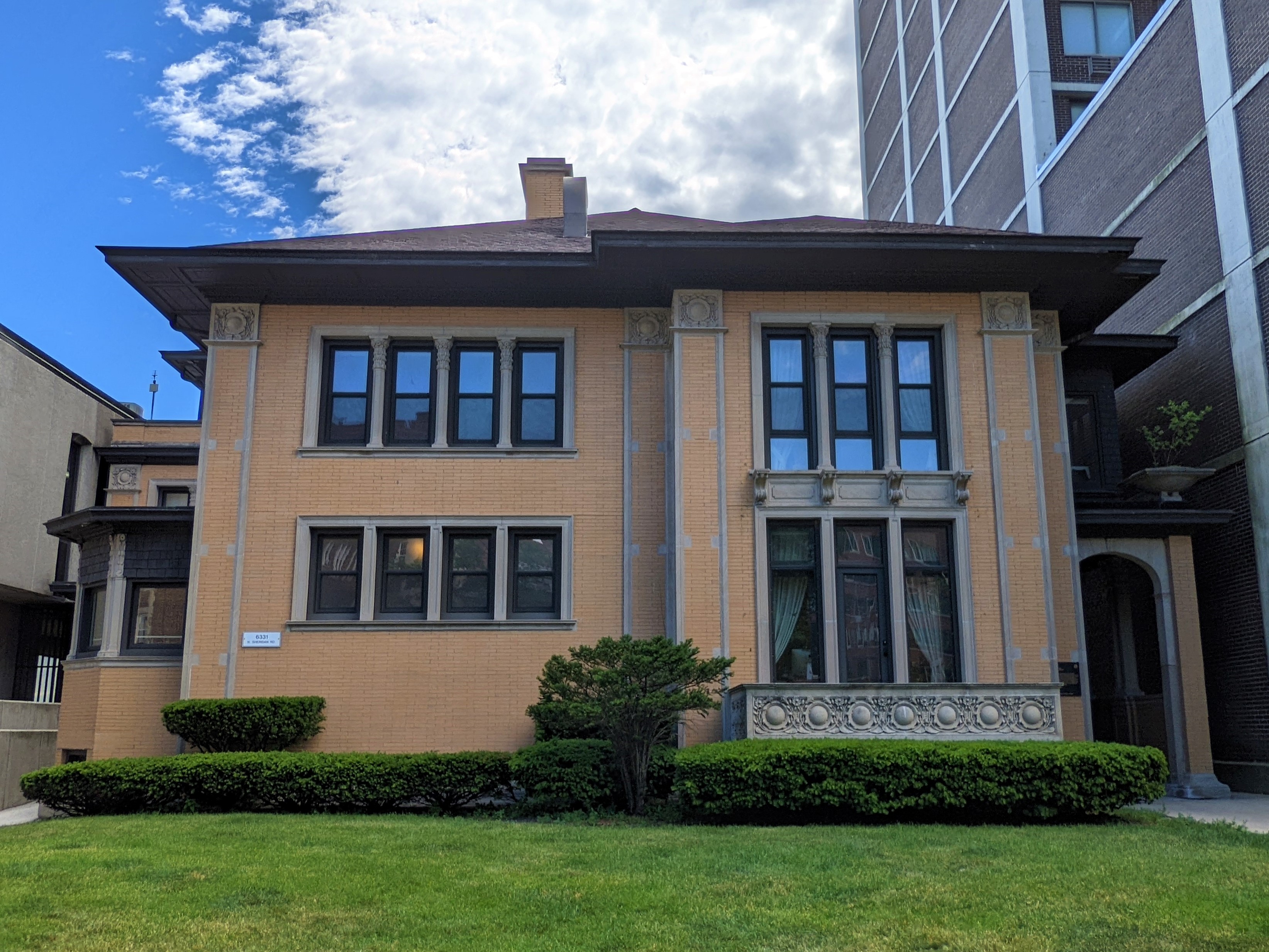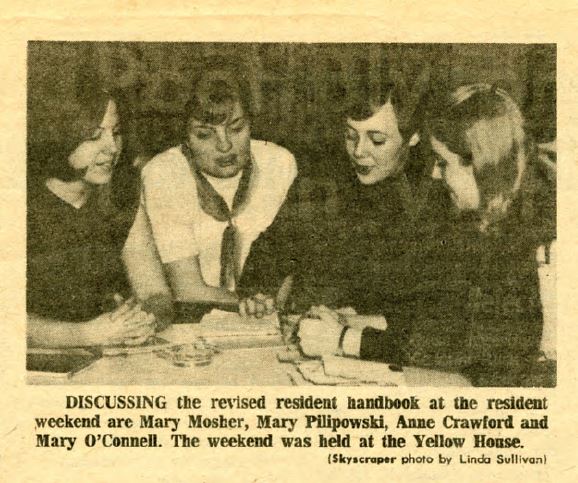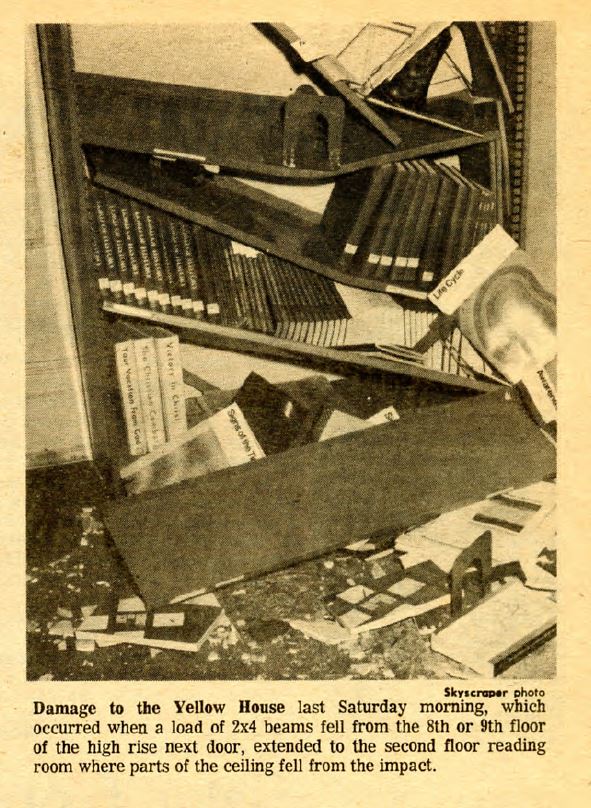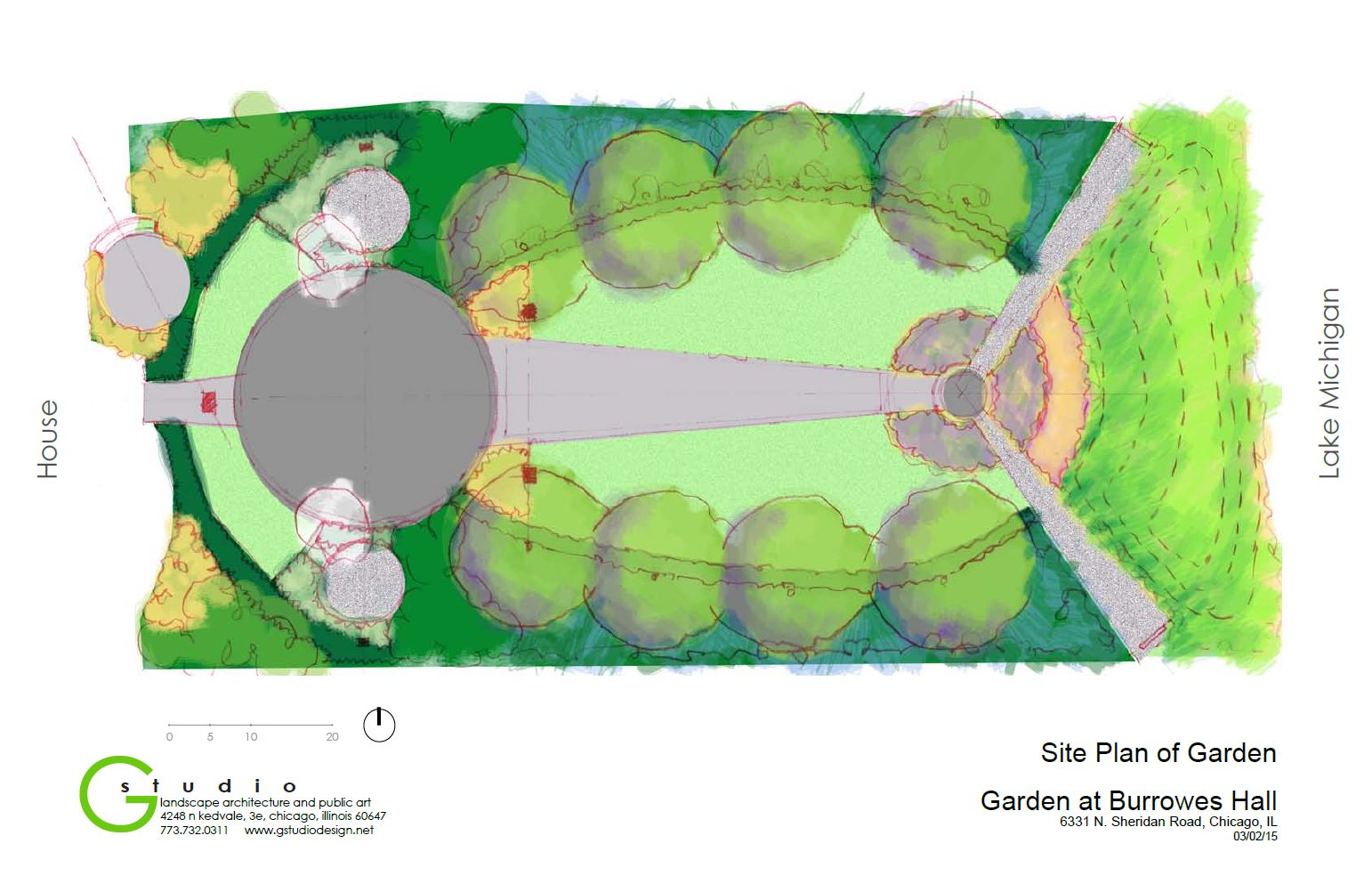Yellow House
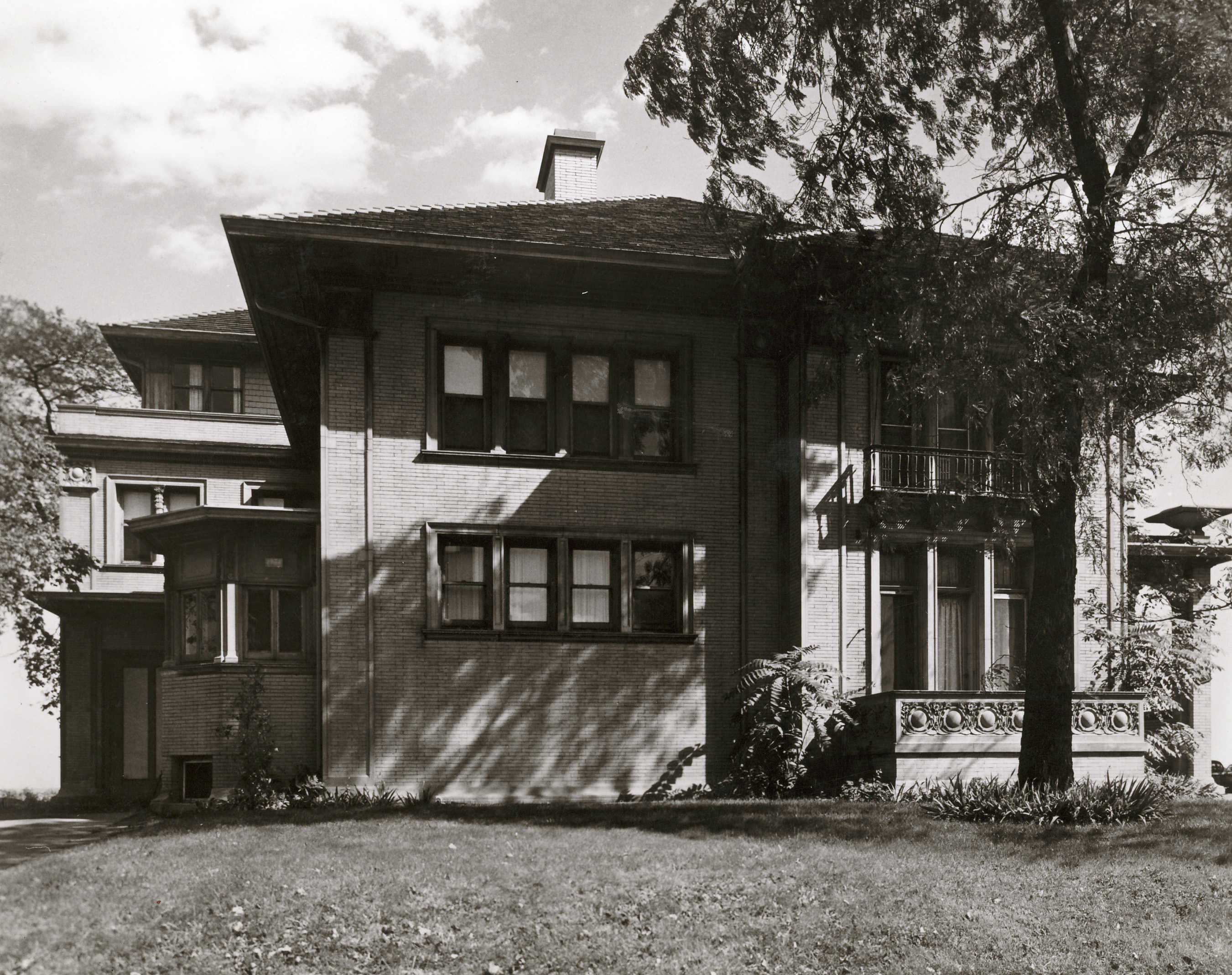
Once a grand residence, Burrowes Hall is an administration building located on North Sheridan Road on the campus of Loyola University Chicago. The mansion was built in 1916 for an estimated $35,000 to be the home of Adolf Schmidt, president of Columbian Colortype.
Architect George Washington Maher, a contemporary of Frank Lloyd Wright, designed the home in the Prairie School architectural style. The interior of the original building featured open space and horizontal lines, key elements of the Prairie School. Maher is said to have named the house “American Lotus” due to his use of the Egyptian lotus flower design throughout the house in moldings, windows, and woodwork. There are also Sullivanesque medallions put to use on the building’s exterior; Louis Sullivan was a mentor of Frank Lloyd Wright and part of the Chicago school of architecture.

The house was used as an apartment building before it was purchased by Mundelein College in a bankruptcy sale in 1965. The division of rooms proved helpful as the Mundelein College Center for Religious Education moved in. During the time Mundelein College occupied the building, it became affectionally known as the “Yellow House” for its bright, distinctive brick façade. Graduate classes in religious studies were held on the first two floors and a group of Sisters of Charity of the Blessed Virgin Mary (BVM) lived on the second and third floors. There were also regular masses held at the “Yellow House” that were less rigid than the “old liturgical form” and encouraged more creative student participation.

Sister Mary Carol Frances Jegen, BVM of the theology department and administrator of the Graduate Religious Studies program, spent years gathering religious texts and audio-visual materials that were put to use in the “Yellow House” when it was home to the Center for Religious Education. Scholars at Mundelein and throughout the country could use and borrow the large collection of religious materials at the center for research. As the Center for Religious Education, the “Yellow House” provided a “place where teachers, students and the clergy of all faiths may study and discuss religious educational curriculum materials.”
In 1968, the Mundelein Student Congress (MSC) and Dorm Council sometimes held meetings and events at the “Yellow House,” although this was partially due to a lack of dedicated meeting space for these student organizations. For “Leadership Week-end" January 5-7, 1968, the MSC holed up in the “Yellow House” and slept on the “sofas and chairs, sharing and making meals, participating in round-table discussions, and attending midnight mass together.” The “Yellow House” was a casual place for students and faculty to learn, discuss, congregate, and worship together.
Mundelein College’s student newspaper, The Skyscraper, reported an accident where several two-by-fours from the neighboring high-rise crashed through the “Yellow House’s” roof on Saturday, September 28, 1968. Thankfully no one was hurt, but there was heavy damage to the roof and the reading room furniture. Sister Blanche Marie Gallagher, BVM was living in the “Yellow House” at the time and remembers the incident: “One morning when I was preparing an aesthetics lecture, a scaffolding came tumbling through the south roof about three feet from where I was studying...As a result, Baird and Warner [a real estate company] covered the six sqaure foot hole in the ceiling with a piece of blue plastic which remained there for a long time. Since it was very cold on the third floor, we would turn on the oven in the kitchen and leave the oven door open for heat.”
In the early 1970s, there were high level winds and lake activity which resulted in a flooding of the “Yellow House’s” basement. Suspecting it was coming, Mundelein College students and faculty stacked sandbags on the east side of the house but were unable to keep the water at bay. One night, the lake broke through and Sister Blanche Marie Gallagher recalls there being three feet of water in the basement! The six BVM residents and Sister Sharon Rose’s cat evacuated and moved into Northland Hall in the middle of the night to get away from the unsafe living conditions.
Later in 1973, the “Yellow House” was converted into a Student Center. At the time, a family occupied the third floor, student organizations had offices on the second floor, and students could reserve rooms on the first floor for meetings, parties, or studying. The building was open to students from 3:00-9:00pm Monday through Thursday and from 12:30-6:30pm on Fridays.
In 1978, the Chicago Community Trust granted the “Yellow House” $25,000 to expand its services to the surrounding community. It hosted a Showcase Exhibition called "Lifestyles in the City" by the American Society of Interior Designers (ASID) where select members of the ASID decorated and furnished different rooms in the “Yellow House" as model apartments. The surrounding community was then invited in to see the different styles and functions of the rooms as laid out by the ASID members.
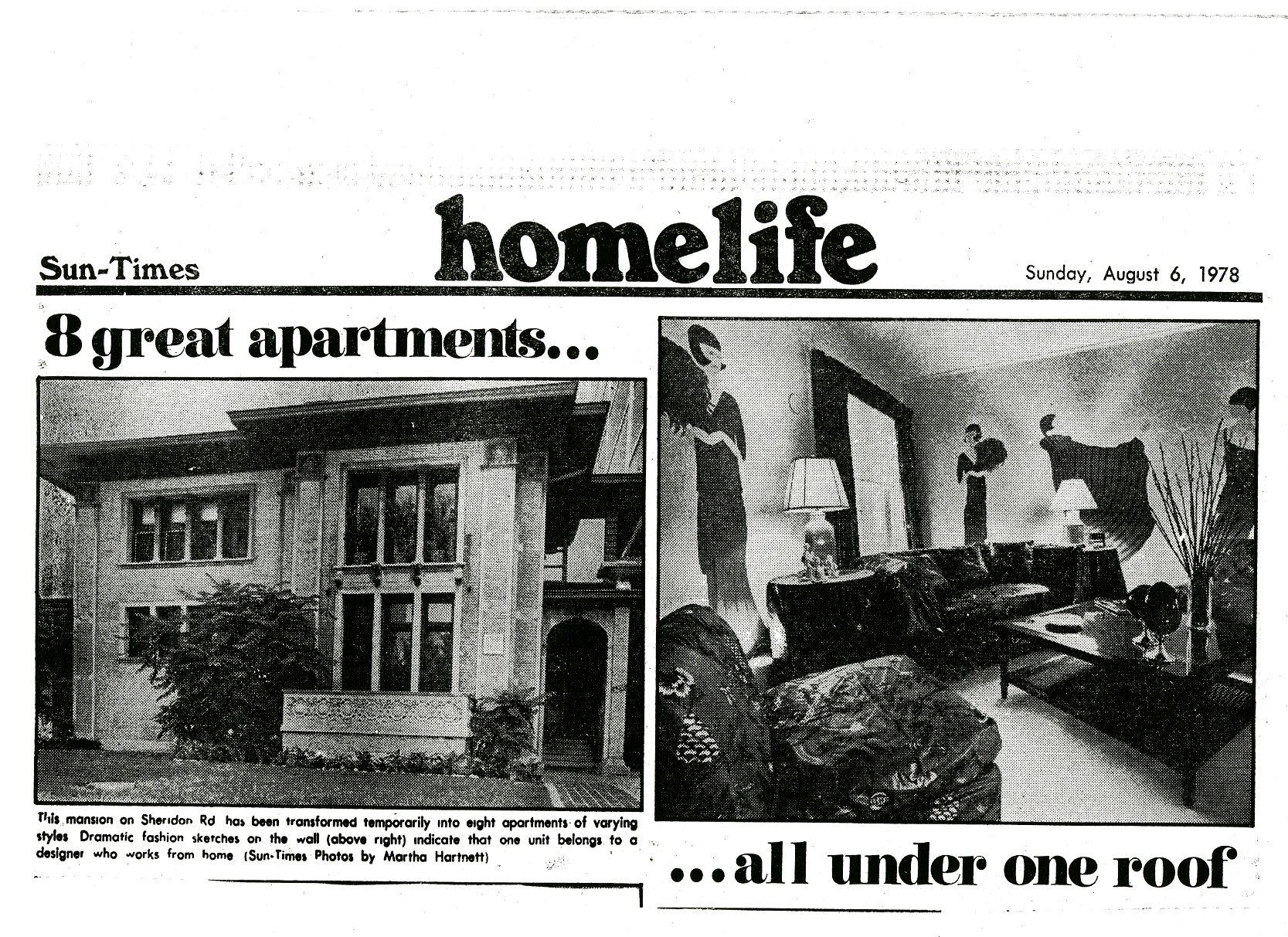
In 1985, president of the college, Sister Mary Brennan Breslin, BVM (pictured below), decided completed much-needed renovations on the “Yellow House.” She and several other BVMs used the building as a residence once renovations were completed in 1986, and it became known as the President’s House.
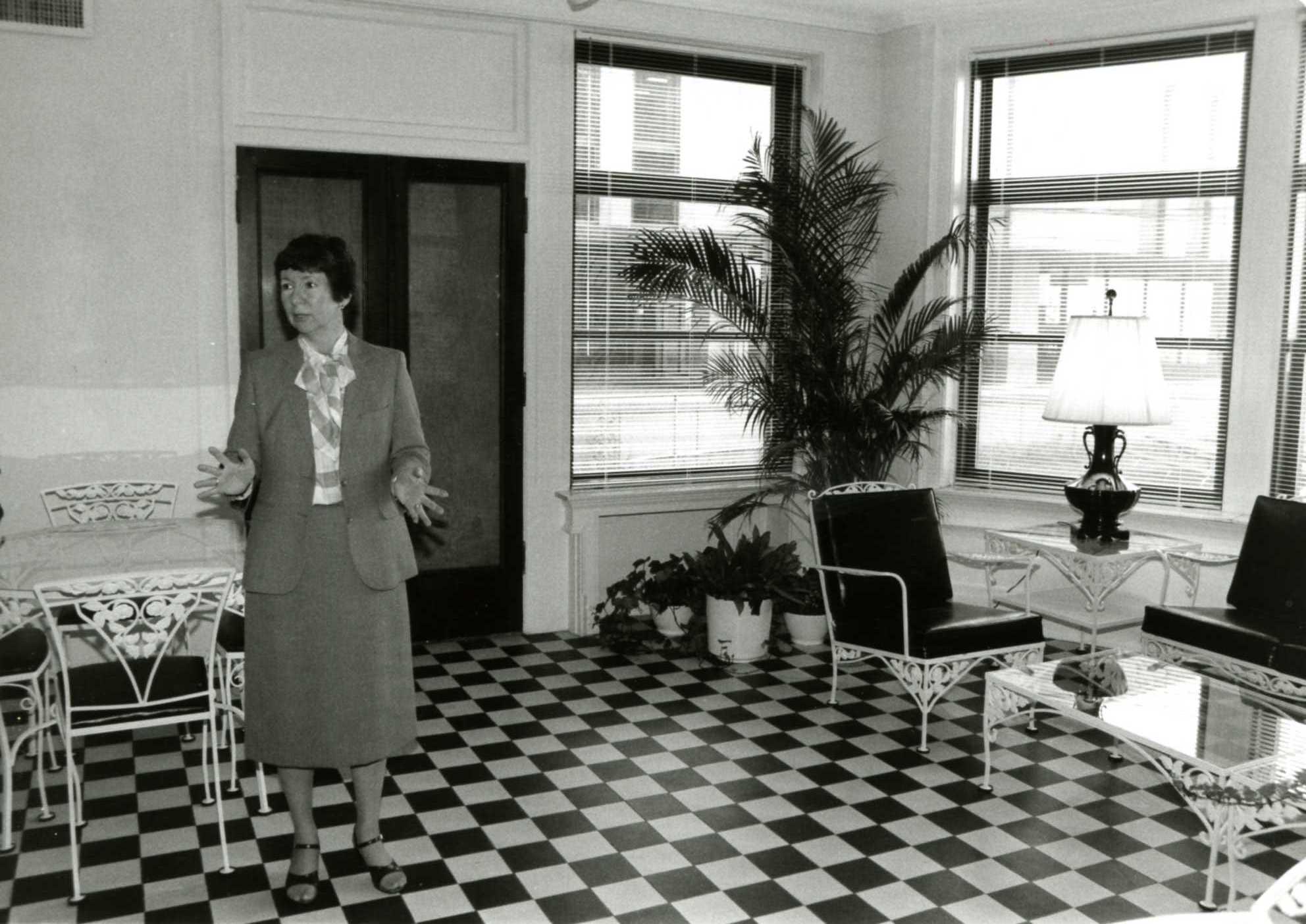
After Mundelein College’s affiliation with Loyola University Chicago, it became the Loyola University Alumni Center in 1993. It was "re-christened" in 2008 to its current name “Burrowes Hall,” in honor of Alexander Burrowes, S.J., Loyola’s president from 1908-1912. As of 2022, it holds administrative offices and a garden for advancing education.
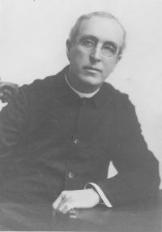
In 2015, fifty Loyola students worked with professional landscape architects and designers in a competition to design a garden for Burrowes Hall. The winning team comprised of Gary Lehman of G Studio, and students Deanna Cabada, Marissa Day, Anna Gwozdz, John Harrington, Cater Konz, Madison Mackenzie, and Erin O’Connell.
This historic home has served many purposes through the years: home, place for worship, study space, gathering place, office space, student center, and alumni center. As of 2022, the building serves as offices on the Lakeshore Campus for Loyola's president, provost, Institutional Research, Faculty Administration, and Mission & Identity.
